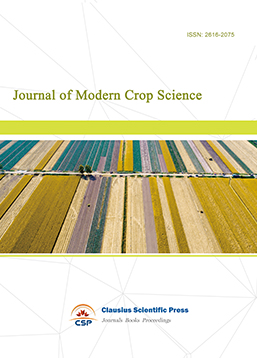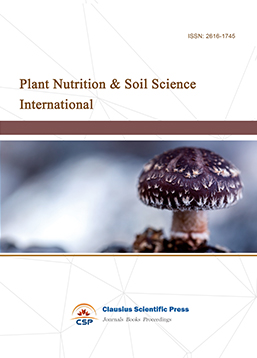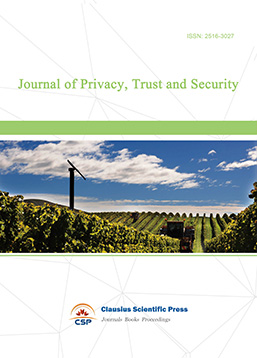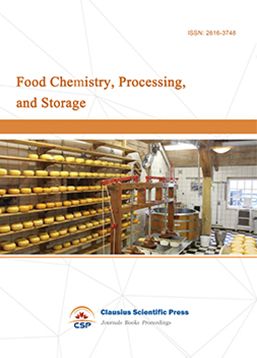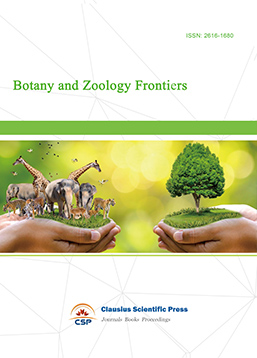Bile Acid Metabolism in Hyperlipidemia Mice Effects of Lipid-Lowering Lactobacillus Plantarum DC4
DOI: 10.23977/afshn.2023.050104 | Downloads: 35 | Views: 1514
Author(s)
Jiajing Song 1, Siying Wu 1, Lingzhu Zeng 1, Wei Xu 1, Yi Tian 1, Ziqi Wu 1, Lei Zhu 1, Jiantao Liu 1
Affiliation(s)
1 School of Life Sciences, Jiangxi Science & Technology Normal University, Nanchang, Jiangxi, 330013, China
Corresponding Author
Jiantao LiuABSTRACT
The purpose of this experiment was to study the changes of bile acid metabolism during the lipid-lowering process of Lactobacillus plantarum DC4. To analyze the body effect of Lactobacillus plantarum DC4 regulating cholesterol metabolism, and to explore the metabolic network pathways it participates in or regulates, and to preliminarily elucidate its mechanism of regulating cholesterol metabolism. Taking the intervention of bile acid metabolism network as the starting point, the effects of Lactobacillus plantarum DC4 on abnormal lipid metabolism and bile acid profile in hyperlipidemia mice were investigated. Combined with QPCR technology, the metabolomics characteristics of bile acids before, during and after Lactobacillus plantarum DC4 intervention were studied to find related and co-changed metabolites and influencing pathways, and to elucidate the mechanism of Lactobacillus plantarum DC4 improving lipid metabolism in hyperlipidemia mice.
KEYWORDS
Lactobacillus plantarum DC4, cholesterol-lowering bile, acid metabolism hyperlipidemia, lipid metabolismCITE THIS PAPER
Jiajing Song, Siying Wu, Lingzhu Zeng, Wei Xu, Yi Tian, Ziqi Wu, Lei Zhu, Jiantao Liu, Bile Acid Metabolism in Hyperlipidemia Mice Effects of Lipid-Lowering Lactobacillus Plantarum DC4. Advances in Food Science and Human Nutrition (2023) Vol.5: 32-38. DOI: http://dx.doi.org/10.23977/afshn.2023.050104.
REFERENCES
[1] Wu Wanqiang, Wang Linlin, Zhao Jianxin, Zhang Hao, Chen Wei. Advances in physiological properties and probiotic functions of Lactobacillus plantarum. Food and Fermentation Industry, 2019, 45 (01): 1-13. DOI: 10. 13995/j. cnki. 11-1802/ts. 019602.
[2] Liu P, Zhao M-L, Li A-Run et al. Mechanism of action of microecological agents and their application in dairy cattle. Feed Research, 2022, 45 (23): 134-138. DOI: 10. 13557/j. cnki. Issn: 1002-2813. 2022. 23. 028.
[3] La Fata G, Weber P, Mohajeri M H. Probiotics and the gut immune system: indirect regulation. Probiotics and antimicrobial proteins, 2018, 10: 11-21.
[4] Rinaldi E, Consonni A, Guidesi E, et al. Gut microbiota and probiotics: novel immune system modulators in myasthenia gravis?. Annals of the New York Academy of Sciences, 2018, 1413 (1): 49-58.
[5] Zhao Jincheng, Luo Yating, Li Yapeng, Cheng Ruyue, Shen Xi, Chen Jianguo, Kang Xiaohong, Li Zhouyong, He Fang. Heat-inactivated Streptococcus thermophilus MN002 modulates intestinal flora structure and bile acids to improve lipid metabolism in high-fat diet-induced obese mice. Health Research, 2023, 52 (02): 259-264. DOI: 10. 19813/j. cnki. weishengyanjiu. 2023. 02. 014.
[6] Xu G T, Wu X W, Zhou X M, et al. Experimental Observation on Antiatheroscloresis Ability of Total Flavonoids from Jumi in Hyperlipidemia Rats. Applied Mechanics & Materials, 2011, 140:137-141.
[7] Huang T, Li ZZ, Bai Y, et al. Probiotics improve lipid metabolism disorders in obese mice induced by high-fat and high-sugar diet. Basic Medicine and Clinics, 2021, 41 (9): 1260.
[8] Huang W L, Xia Y J, Xiong Z Q, Zhang H, Ai L Z, Wang G Q. Study on the hypolipidemic effect of two Lactobacillus species on hyperlipidemic mice. Journal of Shanghai University of Technology, 2019, 41 (06): 521-526. DOI: 10. 13255/j. cnki. jusst. 2019. 06. 003.
[9] Zhou X. Effects of isotonic preparation of Huang Lian Wu Zhu Zhu on cholesterol metabolism-related genes and intestinal flora in rats in a high-fat model. Chengdu University of Traditional Chinese Medicine, 2018.
[10] Li YD, Liu CJ, Gong FM, Li XR. Screening of probiotic bacteria with cholesterol-lowering function and preliminary investigation of its in vitro cholesterol-lowering mechanism. Journal of Food and Biotechnology, 2019, 38 (02): 153-159.
[11] Lee S, Lee M. MEK6 overexpression exacerbates fat accumulation and inflammatory cytokines in high-fat diet-induced obesity. International Journal of Molecular Sciences, 2021, 22(24): 13559.
[12] Han JH, Zhao MD, Fu L et al. Effect of Ginseng and Atractylodes macrocephala on obesity-related chronic kidney disease in rats // Chinese Society for Laboratory Animal Science. Proceedings of the 15th Annual Conference of the Chinese Society for Laboratory Animal Science. 2019: 457-465. doi: 10. 26914/c. cnkihy. 2019. 068202.
[13] Cao H P, Ji D H, Huang Zu F, et al. Isolation and identification of a strong cholesterol adsorbing lactic acid bacteria strain and its probiotic properties. China Brewing, 2022, 41 (3): 110-116.
[14] Li Yi, Wang Hongxin, Jia Qihai, He Guohua, Lu Wenping. Hypolipidemic effect of aqueous extract of Dendrobium chrysanthemum on rats with hyperlipidemia. Journal of Food and Biotechnology, 2019, 38 (12): 97-102.
[15] Zhao L P, Shao W F. Hypolipidemic and fatty liver prevention effects of pu-erh tea in hyperlipidemic rats. Southwest Journal of Agriculture, 2010, 23 (2): 579-583.
[16] Gao Yang. Study on the effects and potential mechanisms of different active fractions of ginseng against qi-deficiency diabetes mellitus. Jilin University, 2022. DOI: 10. 27162/d. cnki. gjlin. 2022. 007681.
[17] Shang HN, Ruan J, Xu M, Zhang Q, Liu KL, Tension, Xiao TIG, Wang B. Effect of bile-clearing, phlegm-transforming and blood-activating formula on bile acid metabolism in rats with metabolic syndrome. World Science and Technology-Modernization of Chinese Medicine: 1-16 [2023-03-24]. R. 2022.
| Downloads: | 2590 |
|---|---|
| Visits: | 90144 |

 Download as PDF
Download as PDF